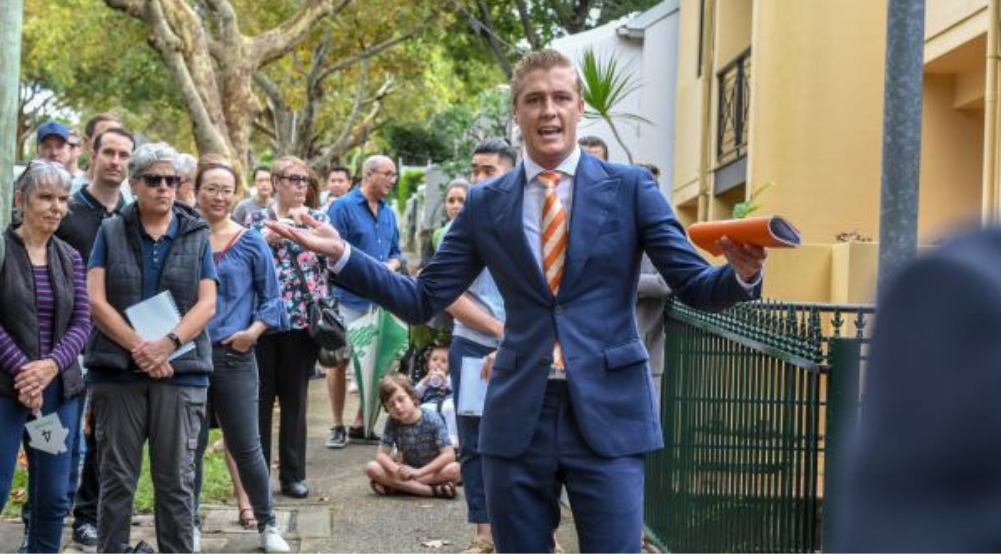First-home buyers could soon face a shorter path to purchase under new plans announced in the lead up to the election, analysis shows.
More than four years could be cut from the time it takes first-home buyer couples to save a house deposit under a policy proposed by the Morrison government, new analysis shows.
The average first-home buyer couple could buy a house four years and eight months quicker in Sydney, under Prime Minister Scott Morrison’s plan to offer loan guarantees to new buyers with deposits of just 5 per cent. A single buyer could get there nine years and four months quicker.
Melbourne buyers could break into the market four years and three months earlier, while those in Brisbane, Canberra, Hobart and Adelaide could get on the property ladder at least three years earlier, Domain data shows.
“It makes it significantly easier,” said Domain senior research analyst Nicola Powell. “The comparison between the time taken to save a 20 per cent and a 5 per cent deposit is pretty stark.”
The figures are based on how long it would take couples saving 20 per cent of their net pay — based on the average income for 25 to 34-year-olds in each city — to buy an entry-level property with a 5 per cent deposit, instead of a traditional 20 per cent deposit. Prices were based on sales over the March quarter.
Saving a 5 per cent deposit for an entry-level apartment takes a year or less of saving in all capital cities bar Sydney, where it would take one year and four months – down from more than five years.
Darwin apartments would be the fastest to save for at six months, followed by Perth at seven months and Adelaide at eight months. Houses in the three cities would require up to 11 months of saving.
Even in Australia’s most expensive market – Sydney – it would only take a couple one and a half years to save a 5 per cent deposit needed for a $649,000 entry-priced house. Melbourne buyers could purchase one month earlier, while Canberra buyers would take 14 months and Brisbane buyers one year.
Across Sydney, the time to save for houses fell by more than a decade in nine council areas, with the biggest drop-off in Mosman where it would take five years and eight months, down from 21 years and 10 months. The most affordable houses, in the Central Coast and Campbelltown, would need 14 months of saving.
Meanwhile Woollahra apartments, the most expensive in the city, would take two years and two months of saving, down from eight and a half years. Across the city’s seven most affordable council areas, including Canterbury Bankstown and Liverpool, it would take one year or less to save.
Across Melbourne, it would take a couple three years and five months to save for a house in the Boroondara local government area, down from the 13 years and four months needed to save a 20 per cent deposit. Buyers in Melton and Wyndham would spend the least time saving at 13 and 15 months, respectively.
For apartment hunters, a year saving would be enough to buy into more than half of greater Melbourne’s council areas. The most affordable was Greater Dandenong at nine months of saving, while Bayside units, the most expensive, would take a couple 17 months to save for.
Dr Powell said lower deposit requirements, combined with falling prices, meant first-home buyers who were traditionally pushed to urban fringes could afford to purchase closer to city centres.
While the scheme would enable first-home buyers to purchase sooner, Dr Powell, along with other experts, raised concerns it would encourage them to take on higher levels of debt at a time when prices were falling — leaving them at higher risk of going into negative equity — and banks were being pushed towards lower loan-to-value rations.
There was also concern first-home buyers, armed with more borrowing power, could drive up prices.
The proposed $500 million scheme announced on Sunday, and backed by Labor, will allow couples with incomes of up to $200,000 to reduce their deposit to as little as 5 per cent, with the government’s National Housing Finance and Investment Corporation acting as a guarantor for the remaining 15 per cent.
Individuals earning up to $125,000 would be eligible for the scheme, which would be capped at 10,000 loans a year, equivalent to about one in 11 first-home buyers, based on 2018 figures.
The government estimated its guarantee would save first-home buyers about $10,000, as they would not need to take out lenders’ mortgage insurance, which is currently required for those borrowing more than 80 per cent of a property’s worth. The loans would be granted on a first come, first served basis.
The value of homes that can be purchased under the scheme has yet to be released, but will be determined on a regional basis to reflect different property markets.
http://ow.ly/KkCt50uc3Xc
